On a latest area journey to the Argonne Nationwide Laboratory, my 12-year-old son was the one pupil in his class in a position to buy snacks within the cafeteria. It appears the on-site vendor didn’t settle for money or Apple Pay, solely debit playing cards. His pals appreciated his generosity. I admire that my youngsters have a debit card of their very own.
The decline in distributors accepting money on area journeys had initially kicked off my quest to discover a debit card I may open for younger youngsters, a not-so-simple endeavor. I used to be additionally on the hunt for one with no charges and that included useful monetary literacy instruments.
Many firms supply debit playing cards or financial institution accounts particularly geared towards youngsters and youths beneath 18. You may also select from a number of with instructional sources and apps to assist your youngster construct good cash habits. However there are dangers to contemplate. We’ll provide help to type via which playing cards assist to maintain your youngster’s private data secure and embrace acceptable parental oversight options so you possibly can monitor your youngster’s spending.
One of the best debit playing cards for youths and youths, in contrast
| Card | Month-to-month charges | Age |
| Greenlight Debit Card | $5 to $15, for as much as 5 youngsters | Any |
| BusyKid Debit Card | $4 for as much as 5 youngsters | Any |
| GoHenry Debit Card | $5 for one youngster; $10 for as much as 4 youngsters | 6 to 18 |
| Step Debit Card | None | Any |
| Axos First Checking | None | 13 to 17 |
| Chase First and Excessive Faculty Checking | None | 6 to 17 |
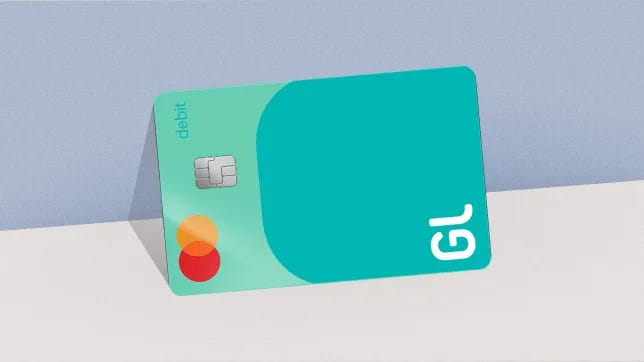
Greenlight Debit Card for Children
Finest total
Minimal age: None
Month-to-month charge: $5 to $15 per thirty days, for as much as 5 youngsters
Free trial: 1 month
ATM charge: None
Buy charges: None
Rewards: 1% money again for purchases, as much as 5% per yr on financial savings
One of the fashionable debit card apps for kids, the Greenlight Debit Card for Children permits dad and mom to limit spending to particular shops, lets youngsters earn curiosity on rising balances and helps households set particular financial savings objectives. The app is intuitive and straightforward to navigate.
You possibly can select between three plans: Greenlight Core ($5), Greenlight Max ($10) or Greenlight Infinity ($15). Your youngster can earn an annual proportion yield between 1% and 5% on financial savings balances as much as $5,000, relying on the plan. The Greenlight Infinity plan comes with further security options, together with vehicle crash detection and SOS alerts.
We like that Greenlight lets dad and mom pay youngsters for finishing chores — you possibly can schedule automated funds so that you don’t neglect. The app permits youngsters to divide their funds between spending, saving, investing and giving. And fogeys will admire the free monetary literacy recreation that’s accessible after downloading the app.
For extra data, see our full evaluation of the Greenlight Debit Card for Children.
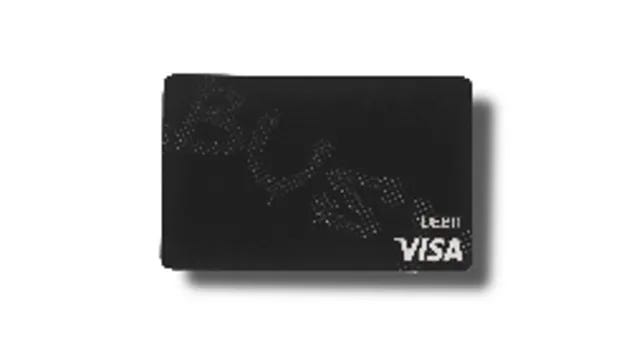
BusyKid Debit Card for Children
Finest for monetary literacy instruments
Minimal age: None
Month-to-month charge: $4 a month (billed $48 yearly), as much as 5 youngsters per plan
Free trial: 1 month
ATM charge: None
Buy charges: None
The BusyKid Visa Pay as you go Debit Card is a superb useful resource to assist youngsters develop monetary literacy expertise. Children obtain a pay as you go debit card for spending, they usually can put money into particular person shares or donate cash to a charitable trigger. You possibly can handle their chores and allowance from the app. Plus, you possibly can ship bonuses for rewards — like good grades or simply as a result of.
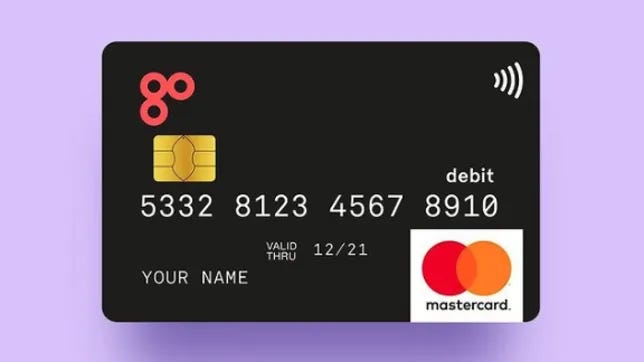
GoHenry Debit Card for Children
Finest security measures
Minimal age: 6
Month-to-month charge: $5 for one youngster; $10 for as much as 4 youngsters
Free trial: 30 days
Enroll bonus: $20 free allowance; promotion ends June 12, 2024
ATM charge: None
Buy charges: None
GoHenry is an effective alternative for folks who need to assist youthful youngsters tackle extra family duties and to pay them for a job nicely carried out. It’s identified for its personalised debit playing cards and companion app with options resembling parental controls, customizable chores and financial savings objectives.
Cash Missions develop your youngster’s monetary literacy growth with age-appropriate in-app movies, tales and quizzes. You may also reward your youngster financially as they full the teachings.
What we actually like: The corporate’s coverage clearly states that it doesn’t promote your — or your youngsters’ — private data to 3rd events with out your permission.
For extra particulars, see our full GoHenry Debit Card for Children evaluation.
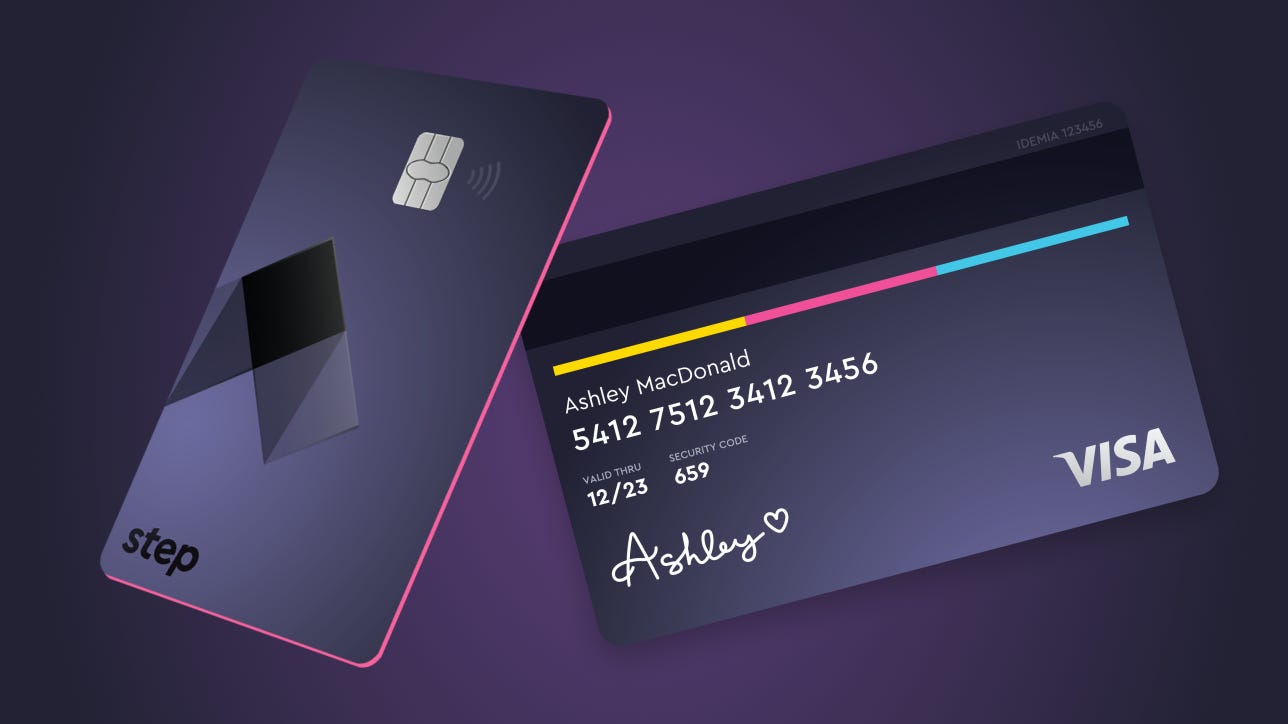
Step Card for Teenagers
Finest for any age with no month-to-month charges
Minimal age: None; 13 for Step Black
Month-to-month charge: None for primary; $5 for Step Black (waived with direct deposit)
Free trial: None
ATM charge: None
Buy charges: None
Step could also be higher fitted to teenagers who’re able to degree up their monetary data, because it gives entry to funding instruments and presents monetary literacy coaching programs. Nonetheless, there’s no minimal age to enroll, and youthful youngsters can simply use Step to begin studying find out how to handle spending accounts and set financial savings objectives. And Step doesn’t cost a month-to-month charge to take care of the fundamental account.
Like a daily debit card, Step attracts on deposited funds to pay for purchases. In contrast to a debit card, the Step card processes all transactions as credit score — which implies your youngster can construct credit score safely with out having to fret about overdraft charges or accruing curiosity.
We like that Step presents direct deposit so your teen can ship their paychecks on to their account. Your youngster may earn rewards when utilizing their debit card at choose retailers.
Step Black, which is free to teenagers with direct deposit (or $5/month) additionally lets them spherical up purchases to the closest greenback and add the distinction to a financial savings purpose. In the event that they use direct deposit so as to add $500 or extra per thirty days to their Step Black account, your youngster can earn 5% annual proportion yield, or APY, on balances as much as $1,000,000.
However there’s a significant disadvantage to contemplate. Step makes it clear that it shares your private data with enterprise companions to serve up services or products presents primarily based in your youngster’s information. Step’s privateness coverage says you possibly can choose out, however you’ll must contact the corporate straight.
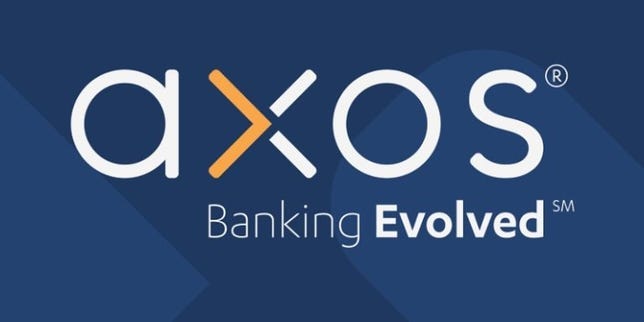
Axos First Checking
An interest-earning account
Month-to-month charge: None
Free trial: None
ATM charge: None
Buy charges: None
Axos’ First Checking account teaches teenagers (ages 13 to 17) to make use of a debit card. Your youngster can use the account to ship cash to folks and distributors and to pay payments. It additionally presents 0.10% APY, so your youngster can earn some curiosity on their financial savings. We like that there are not any month-to-month upkeep, overdraft or nonsufficient funds charges, plus teenagers can stand up to $12 in home ATM reimbursements per thirty days. However there aren’t many different perks geared towards rewards and allowances.
Dad and mom can handle the teenager’s account from the cell app. This may mean you can monitor spending, lock and unlock the debit card, and set alerts.
Axos does share (PDF) your private data with different monetary firms to market services to you — however you possibly can choose out of focused affiliate advertisements.

Chase First and Excessive Faculty Checking
A superb choice for Chase prospects
Minimal age: 6
Month-to-month charge: None
Free trial: None
ATM charge: None
Buy charges: None
Chase presents two kinds of checking accounts with debit card entry for youth. Dad and mom should have already got an present Chase checking account to open an account for his or her youngsters, however neither account costs a month-to-month charge or requires a minimal stability.
The Chase First Banking account is accessible to youngsters ages 6 to 17. It contains helpful options that oldsters will admire, resembling spending controls, financial savings purpose monitoring and a recurring allowance choice that may be paired with a chore checklist.
The Chase Excessive Faculty Checking accounts are for youths ages 13 to 17 and supply extra freedom — this account presents account alerts as a substitute of parental spending controls — and gives direct deposit, cell test deposits and Zelle transfers. One draw back is that you just and your youngster should go to a department to open the account in particular person.
Why I needed a debit card for my youngsters
It’s simple to low cost this, however youngsters can begin incomes cash at an early age. Whether or not from birthday items, rewards for stellar report playing cards or beneficiant grandparents, your youngster might take pleasure in a gradual supply of earnings nicely earlier than they hit double digits.
Instructing your youngster find out how to handle cash early on can set them on the proper path for his or her monetary future. Specialists advocate exposing your youngsters to monetary literacy matters from an early age. “At the same time as a toddler, they’ll nonetheless begin turning into snug and assured with cash,” stated Amy LeBaron-Blacketting, an assistant professor of household life at Brigham Younger College, in an interview with ZDNet.
Whereas a piggy financial institution is a superb visible support for exposing younger youngsters to financial savings and money administration ideas, opening an account with debit card entry on your youngster could be extra handy, simpler to handle and academic, because it permits them to take part in complicated monetary transactions resembling transferring money to financial savings accounts, opening a certificates of deposit and investing.
However I discovered that not all banks and credit score unions supply accounts with debit card entry for minors beneath the age of 13, and I needed them to have an account of their identify.
A debit card designed for youths — one with useful instructional instruments and an intuitive interface — can assist educate them find out how to set financial savings objectives, “earn” cash from dad and mom for finishing chores or obtain direct deposits from an actual job as soon as they start receiving paychecks. And debit playing cards are typically a safer choice than carrying money.
In case you’re frightened about overspending or poor cash administration, most debit playing cards designed for youths are linked to apps which have parental controls and protections permitting dad and mom to maintain a detailed eye on their youngsters’s monetary actions.
Are debit playing cards for youths secure?
New expertise all the time presents dangers — particularly when youngsters are concerned. Two-thirds of fogeys consider that elevating youngsters is more difficult than 20 years in the past, exactly due to expertise, in keeping with a Pew Analysis survey.
And it’s not simply display time that raises considerations — 915,000 youngsters have been victims of identification theft from July 2021 to July 2022, in keeping with a 2022 examine by Javelin Technique & Analysis.
Although that was not the fault of the monetary trade, the banks do play a job in the issue.
Information mining has turn out to be a worthwhile useful resource for companies, and monetary companies have proven that they’re prepared to promote buyer information. As such, the burden in the end falls to prospects to watch and shield their very own — and their youngsters’s — information.
Weighing the advantages and dangers of a debit card on your youngster includes a balancing act. The primary factor to contemplate is how a lot you’re snug sharing on-line. Whereas each issuer is completely different, you’ll want to supply figuring out details about your self and your youngster to enroll, together with beginning dates, Social Safety numbers, deal with and a telephone quantity.
The corporate may additionally ask you to share your GPS location historical past, buy historical past and behavioral profile — data that will permit the app to share focused advertisements for services. That stated, debit playing cards for youths are sometimes no riskier than their grownup counterparts for just a few causes:
- Little one-specific legal guidelines: The Kids’s On-line Privateness Safety Act, or COPPA, takes privateness a step additional for kids beneath 13 who use banking merchandise by requiring issuers to obviously define what data they’re accumulating and get parental consent beforehand. Pay shut consideration as to if the issuer intends to promote your youngster’s information to 3rd events.
- Buy safety: In case your youngster’s card is misplaced or stolen, some issuers supply refunds for fraudulent purchases — for an extra charge. Greenlight’s pricier Max and Infinity plans present buy safety.
- Card safety: Pay as you go playing cards are outfitted with EMV chip expertise and password-protected accounts that require a PIN or facial recognition to entry the account.
- Locking functionality: Most debit playing cards for youths include a parental locking characteristic that lets you shield the money within the account via your app if the cardboard is misplaced.
- Deposit insurance coverage: Pay as you go debit playing cards issued by banks insured by the Federal Deposit Insurance coverage Company shield as much as $250,000 per particular person, per establishment, that means you received’t lose the cash in your account if the financial institution fails.
Though the identical safety measures shield child and grownup debit playing cards, it bears repeating that any data you share about your youngster on-line will increase their danger profile. On-line information breaches have uncovered large numbers of accounts, which regularly include delicate data, together with Social Safety numbers, addresses, telephone numbers and bank card numbers.
After signing your youngster up for a debit card, search for payments or bank card functions addressed to them, and ask questions if a debt collector calls with their identify on file. The Federal Commerce Fee outlines steps to take in case you suspect identification theft, and Experian presents a free ID scan service to see whether or not your youngster’s SSN is lively on any credit score accounts.
Setting expectations together with your youngster
Earlier than you hand over a card to a younger and keen spender, an in depth dialog about debit card use is essential. When the debit card arrives, sit down together with your youngster and talk about the essential factors.
- Security: Most pay as you go debit playing cards present a locking characteristic if the cardboard is misplaced or stolen, however you possibly can’t take the mandatory steps with out communication out of your child. Remind them to maintain their card in a secure place, to not share their password or PIN with anybody and to not make purchases on an unsecured Wi-Fi community. And solely use ATMs at banks to mitigate the chance of debit card skimming — a hack to steal card numbers. In the event that they assume their card is compromised, they need to inform you straight away.
- Spending guidelines: In case you’re involved about the place your youngster might spend their money, contemplate signing up for a debit card resembling Greenlight or Chase First Banking that lets you block sure retailers. In case you’ve already signed up for a card that doesn’t have this characteristic, speak to your youngster about acceptable spending habits and allow them to know that you just’ll be monitoring their purchases.
How I selected a debit card for my youngsters
Sadly, there was no excellent debit card that checked all of the packing containers. So, I developed an inventory of must-have options and compromised on the nice-to-haves. I most well-liked an account that I may open of their names and one they may proceed to make use of as youngsters — my youngest was 7 on the time. I needed them to imagine possession and deal with this account as their very own, at the same time as younger youngsters.
I used to be additionally considering an app with monetary training instruments and video games, parental controls and assist for setting financial savings objectives. Above all, I needed to keep away from debit playing cards with month-to-month charges. That was a nonstarter. Right here’s why I selected Step:
- No month-to-month charges, minimal deposit necessities or age restrictions.
- My youngsters may set financial savings objectives utilizing subaccounts.
- Every debit card buy helps my youngsters set up optimistic credit score histories as a result of the cardboard is definitely a pay as you go bank card.
- I obtain alerts in actual time at any time when the account is accessed.
I don’t love that Step’s high-yield financial savings account is simply obtainable in case your youngster can preserve $500 per thirty days or extra in direct deposits; in any other case, the account doesn’t earn curiosity. (We hold a small quantity for spending within the Step account and use a separate high-yield financial savings account for curiosity development.)
Transfers from linked debit playing cards can be found immediately, so I can add cash at a second’s discover if wanted. Listed below are another causes I don’t love Step:
- The companion app has restricted instructional sources for youth, primarily geared towards highschool college students.
- The app additionally doesn’t present instruments to create chore lists or distribute an allowance primarily based on process completion.
- Dad and mom can’t set spending limits or limit spending to accepted companies or distributors via the app.
Selecting the perfect debit card will rely in your wants as a dad or mum and what’s finest on your youngster when kickstarting their private finance journey.
Components to contemplate earlier than choosing a debit card on your youngster
Earlier than you start, familiarize your self with parental controls or instructional sources obtainable to assist enhance your youngster’s monetary literacy. Many debit playing cards for youths additionally present companion apps that allow you to set chores or particular objectives, which you’ll be able to reward with a money deposit.
Additionally, contemplate the next elements:
Parental controls
All of the apps listed above supply a wide range of parental controls, together with the flexibility to routinely pay an allowance, lock the debit card or look at your child’s obtainable stability. Some options let you choose which kinds of purchases your youngsters could make, set spending limits and set rewards for the completion of sure duties. Completely different apps present various levels of management, however most will allow you to hold tabs in your youngster’s spending and saving, and assist them handle their cash as wanted.
Instructional sources
A lot of the playing cards right here embrace entry to instructional sources for you and your youngster. Your youngsters can study necessary expertise like budgeting, saving, spending and even investing. Some playing cards supply sources primarily based on age and monetary literacy classes — resembling spending, saving, credit score and extra.
Age
Some debit playing cards designed for youths have minimal age limits, however most mean you can join a toddler till they’re 17 years outdated; they’ll open an account on their very own at 18. You’ll have to verify the minimal or most age, and resolve if it’s the proper time on your youngster to get a debit card.
Eligibility
Many debit playing cards designed for kids require private data and a shared checking account. Dad and mom should additionally present data and obtain the app to handle their child’s account and switch cash.
Sometimes, this data contains easy identification resembling e-mail, telephone quantity, deal with, date of beginning and doubtlessly the dad or mum’s and youngster’s Social Safety numbers.
Spending expectations
Some debit playing cards for kids characteristic spending and withdrawal limits that oldsters can set. You’ll need to make certain your youngster’s spending received’t exceed the debit card’s limits.
Financial institution familiarity
You would see in case your most well-liked financial institution presents a youngsters’s debit card. It’s normally simpler to get new merchandise or good phrases if you have already got a longtime relationship with the monetary establishment.
The right way to signal your youngster up for a debit card
When you’ve settled on a debit card on your youngster, comply with these steps to use:
1. Select the debit card that finest matches your youngster’s spending and gives useful monetary literacy sources.
2. Apply securely on the cardboard issuer’s web site by offering all the required data, together with identify, date of beginning, deal with, e-mail, telephone quantity and doubtlessly your SSN.
3. Assist your youngster construct accountable monetary habits. Discuss how a lot they’ll anticipate to obtain usually and create floor guidelines to assist them allocate their funds responsibly.
The underside line
My youngsters have had debit playing cards for 3 years and I’m fairly pleased with the comfort and publicity to complicated monetary matters that having this account affords them. Their buy requests are pretty easy: a brand new online game, ebook sequence or drawing package right here or there. They’ll additionally assist worthy causes with monetary donations of their identify.
To compensate for the restrictions in oversight options obtainable with many subscription-based debit card plans, I implement spending controls by minimizing the money of their spending accounts and solely handing over the bodily card for preapproved — by me — purchases.
You’ve got quite a lot of choices when trying to find debit playing cards for younger youngsters and youths. I began my search with my present banks earlier than reviewing fintech choices. Subscription-based plans with strong apps, superior parental controls and in-depth instructional instruments are useful in case your price range permits. Used appropriately, an account with a debit card may give youngsters and youths firsthand expertise with dealing with cash and assist them make good monetary choices — from an early age.
FAQs
There are a selection of debit playing cards for youths that don’t cost membership charges, together with Step and Axos First Checking. Paid companies might supply extra options, although.
Corporations reserve the proper to alter how they use collected information at any time, so it’s a good suggestion to maintain monitor of your account’s privateness coverage and use of focused advertisements proven to your youngster via the app. Client safety legal guidelines govern points of what firms can share, however not all. When you’ve chosen a product, learn the positive print rigorously to verify it aligns together with your consolation degree.
Minors are prime targets for identification theft, primarily as a result of dad and mom typically don’t detect an issue till their youngster begins working and submitting tax returns. Though most debit playing cards for youths accumulate solely the custodial account holder’s SSN, it’s nonetheless prudent to search for indicators of kid identification theft, together with debt assortment calls, payments or bank card functions that seem in your youngster’s identify. The FTC outlines steps to take in case you suspect identification theft, and Experian presents a free ID scan service to see whether or not your youngster’s SSN is lively on any credit score accounts.
In case you’re seeking to begin instructing your youngsters about monetary literacy, listed below are extra sources.
The editorial content material on this web page relies solely on goal, impartial assessments by our writers and isn’t influenced by promoting or partnerships. It has not been supplied or commissioned by any third occasion. Nonetheless, we might obtain compensation whenever you click on on hyperlinks to services or products supplied by our companions.












:max_bytes(150000):strip_icc()/TAL-calgary-AFFORDSOLO0624-2ba7b1a5c5d142c589aa5639baf19164.jpg?w=300&resize=300,300&ssl=1)








+ There are no comments
Add yours